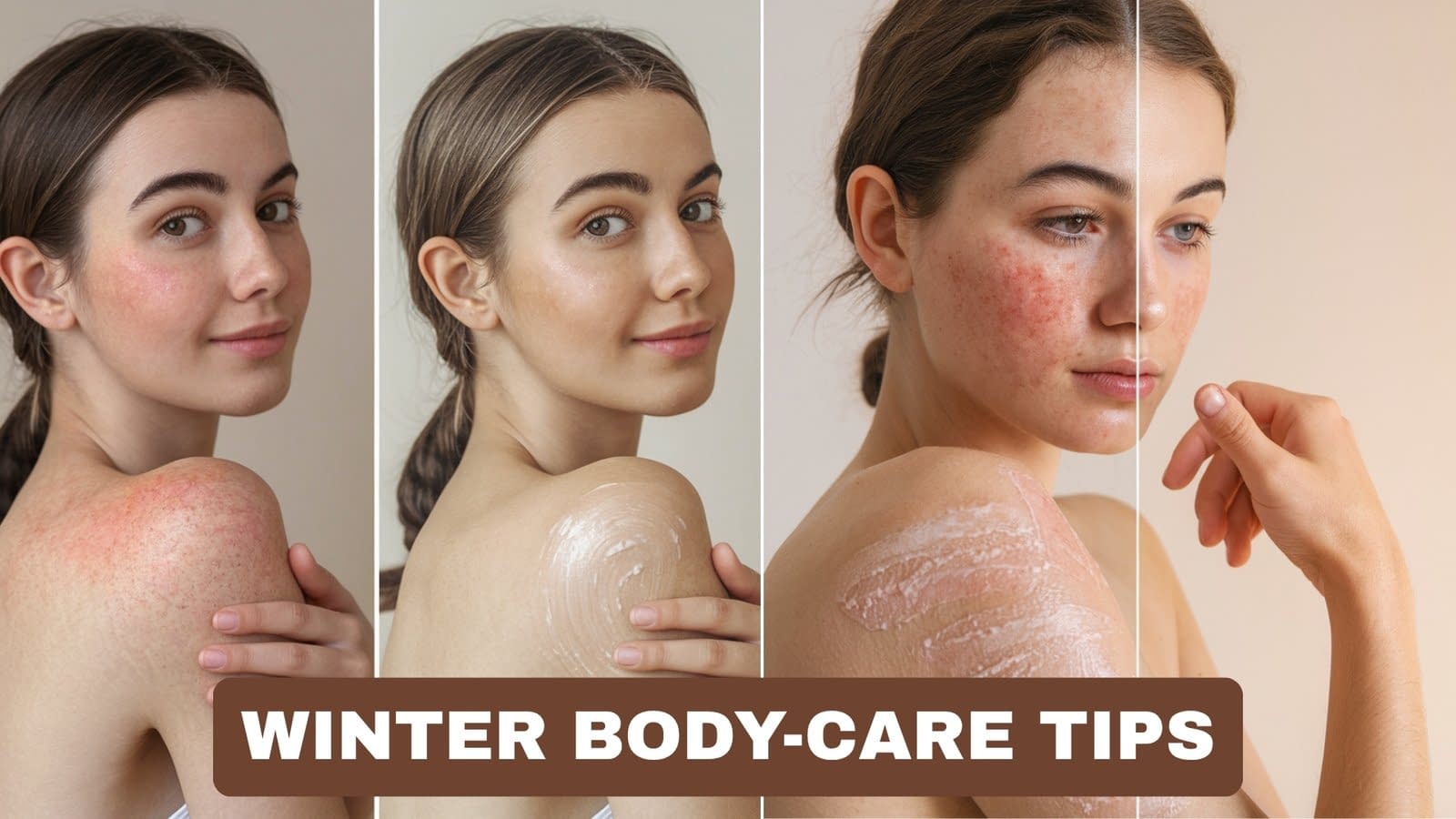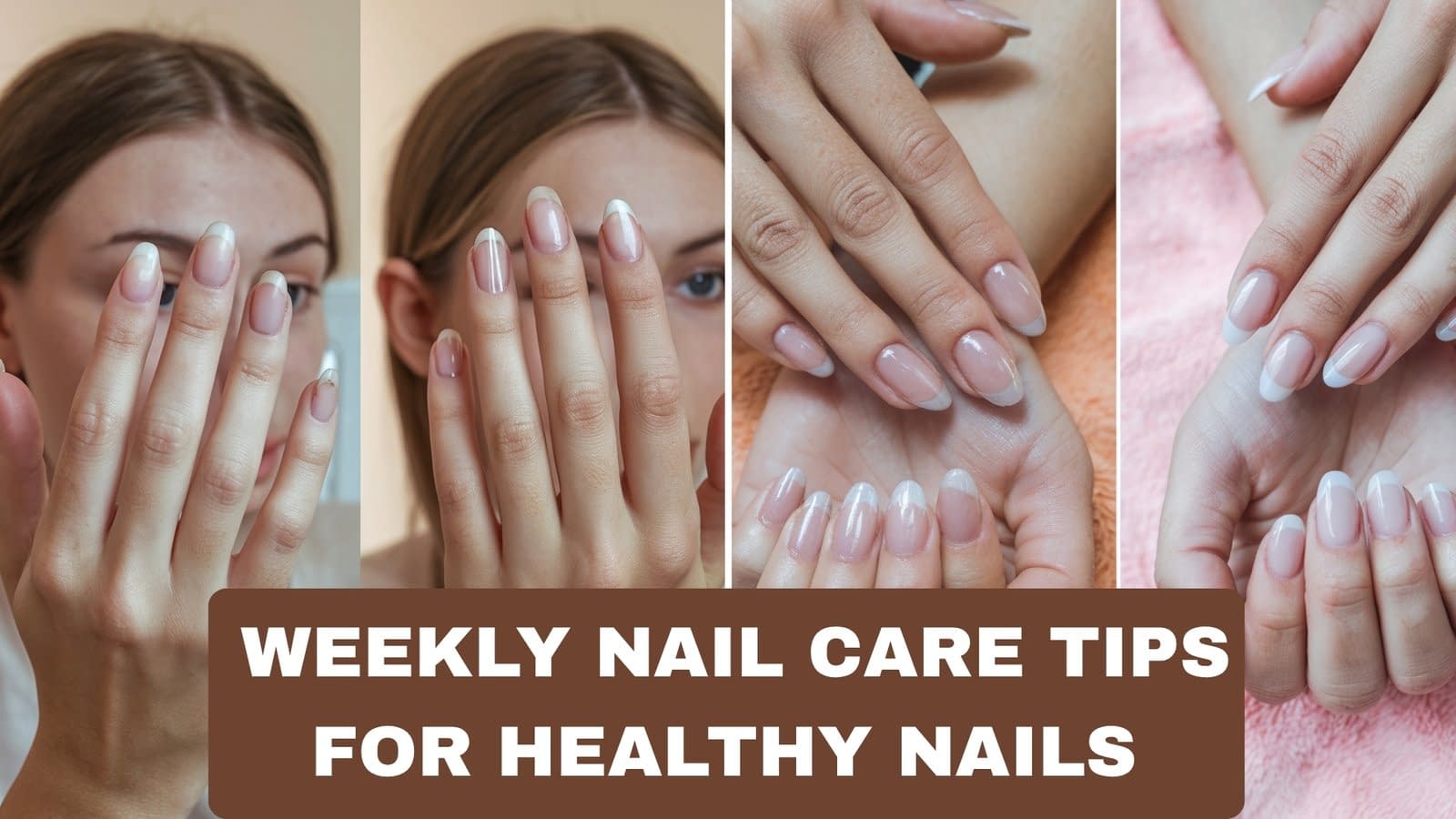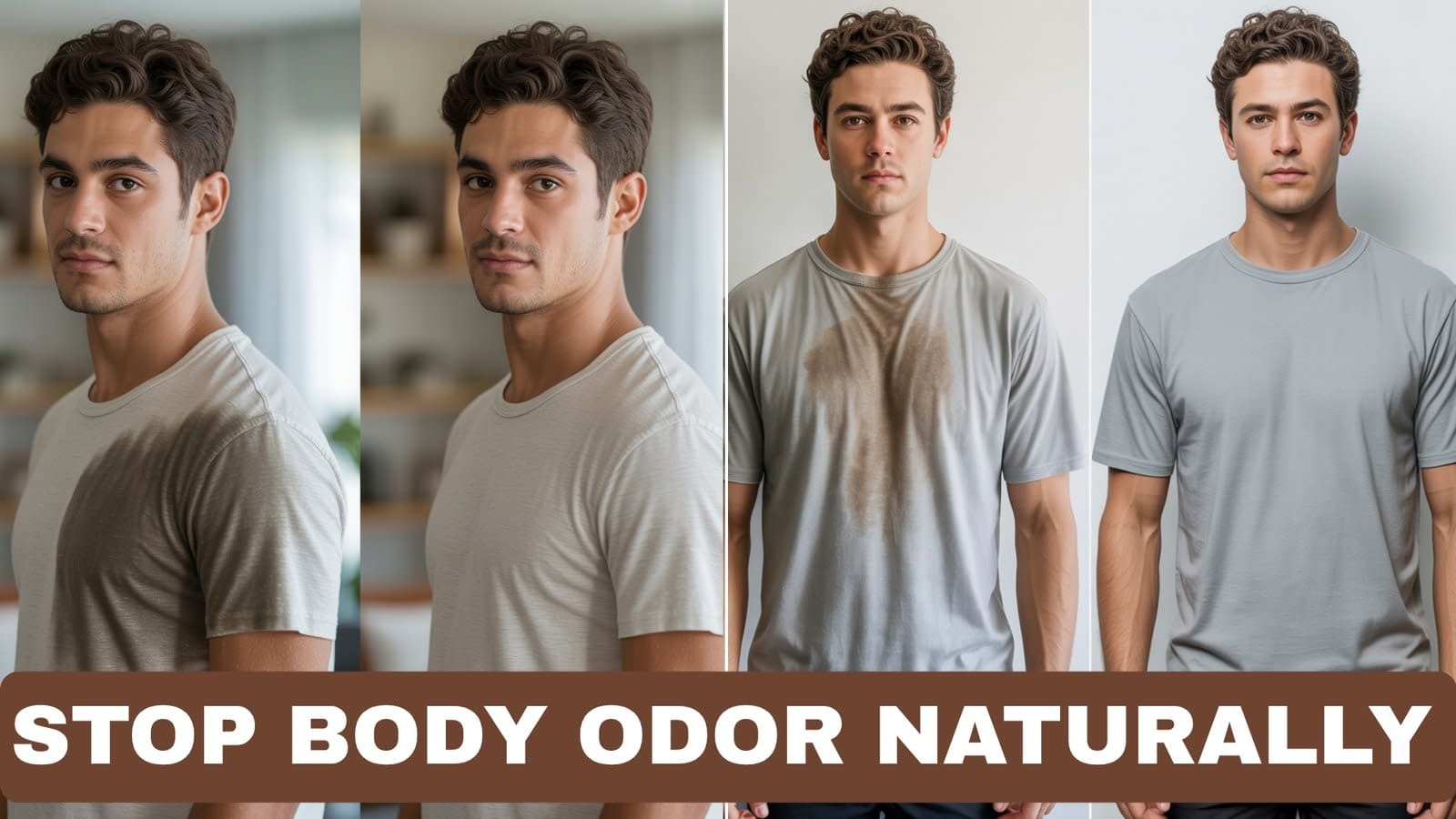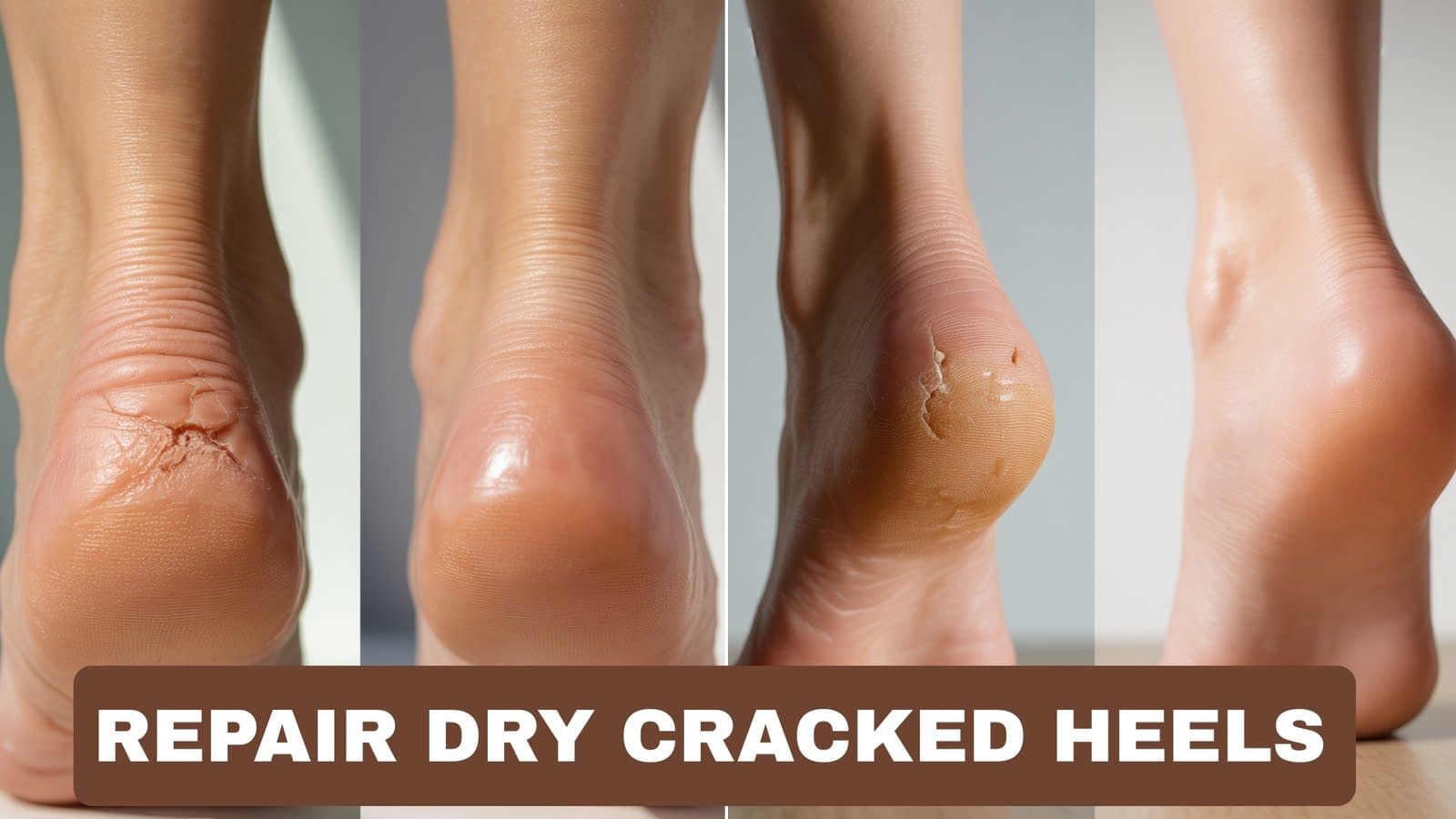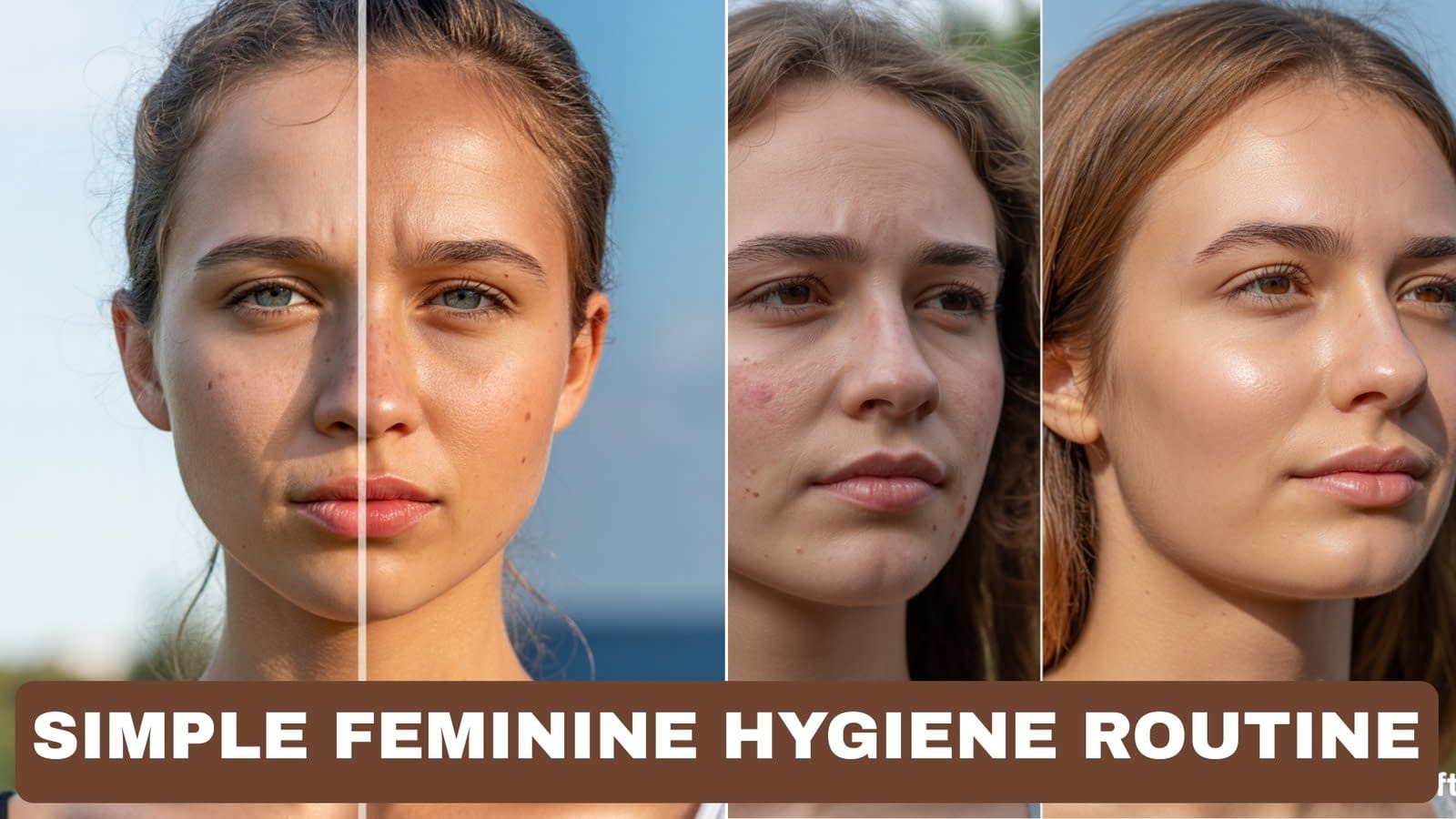Winter arrives and your skin starts acting like a drama queen — dry, tight, itchy, flaking, and inexplicably offended by everything. That’s not you failing at skincare; it’s a predictable physical response to cold air, indoor heat, hot showers, and a hundred tiny mistakes. Below is a practical, straight-to-the-point playbook: what actually causes winter dryness, what to do in the shower, how to pick moisturizers that work, quick body-wide fixes, and a clear “when to see a doctor” checklist. No fluff. Just steps you can follow tonight and every winter after.
Why Winter Wrecks Your Skin
Short explanation: winter removes water from the skin and breaks down its protective barrier. When the barrier goes, irritation, itch, and roughness follow.
What actually happens (step-by-step)
- Colder outside air = lower humidity. Dry air pulls moisture out of your skin by evaporation.
- Indoor heating + closed windows = even drier air. Central heating often drops indoor humidity below comfortable levels.
- Hot showers and baths strip oils. Heat dissolves skin’s natural lipids, which normally keep moisture locked in.
- Barrier impairment = inflammation and loss of water. Once the lipid barrier is damaged, water escapes faster and skin becomes reactive (red, itchy).
- Seasonal behaviors compound it: heavier fabrics, friction from clothes, more frequent hand washing (hello pandemic habits), and even changes in diet or activity can make things worse.
Quick takeaway: winter steals moisture and your routine can either fight back or make things worse. The rest of this guide shows you how to fight back without turning your skin into a desert.
Hydration Starts in the Shower: Do’s and Don’ts
Hot showers feel therapeutic until your skin looks like cracked pottery. Tone it down and do smarter things.
Shower routine (step-by-step)
- Turn down the temperature: Use warm, not hot, water. Think cozy, not scalding. Hot water speeds lipid loss and inflames skin.
- Limit time: 5–10 minutes is enough for a body wash. Longer than that increases moisture loss.
- Choose gentle cleansers: Use creamy, fragrance-free, soap-free cleansers or syndets (surfactants that are less harsh). Avoid bar soaps with strong detergents.
- Use a soft cloth or hands: Rough loofahs and stiff brushes create micro-abrasions and increase irritation—skip them in winter.
- Pat-dry, don’t rub: Use a soft towel and gently blot skin so some moisture remains.
- Oil or lotion while damp: Within 1–3 minutes of stepping out, apply an emollient — see section 3 for what to use. That locks water into the skin.
Bonus: for extremely dry patches, consider adding 1–2 tsp of an unscented bath oil or colloidal oatmeal to the bath (test first if you’re sensitive). Don’t add too much — you don’t want a slippery tub or to clog drains.
Choose the Right Moisturizer (It’s Not Always Lotion)
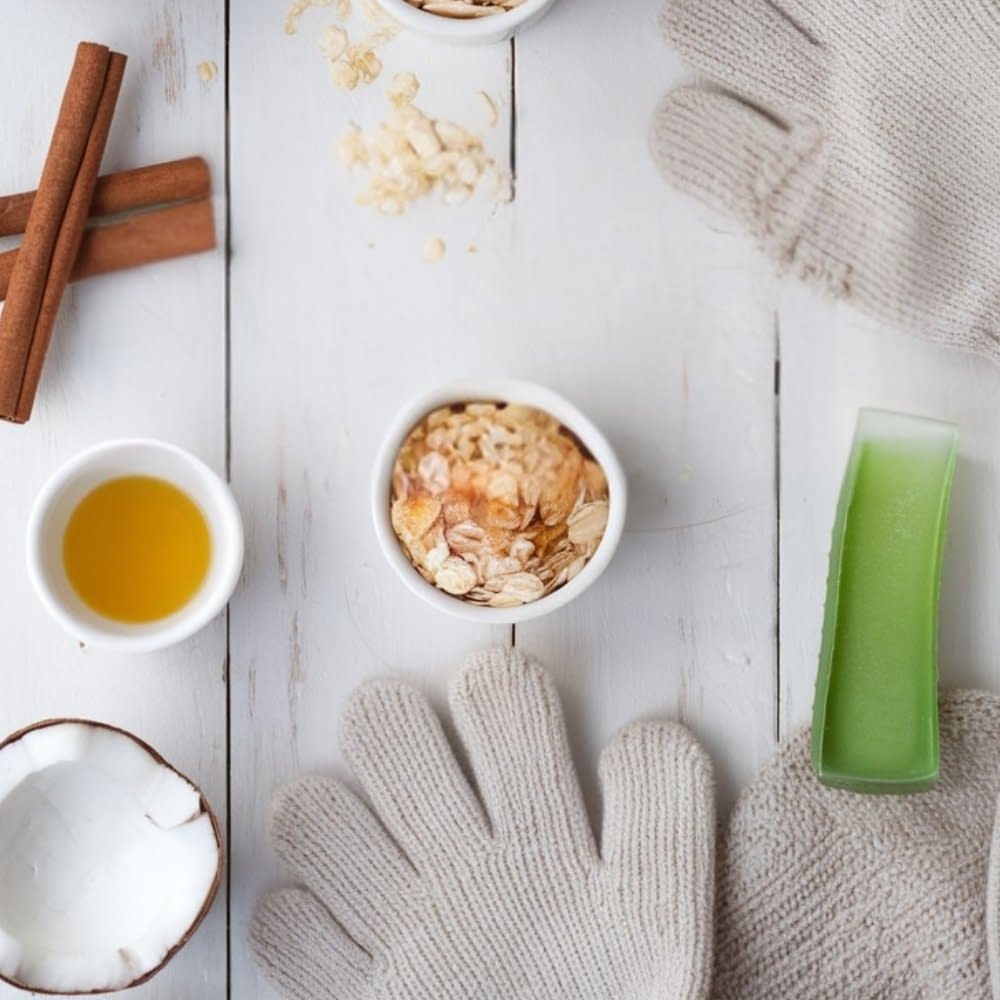
“Moisturizer” is a category, not one product. Match the texture and ingredients to your skin and severity of dryness.
How to choose and apply (step-by-step)
- Identify your dryness level:
- Mild dryness: light lotion or gel-cream.
- Moderate: cream (thicker, often oil + water).
- Severe or flaky: ointment/ balm (thickest barrier, e.g., petrolatum-based or plant-oil heavy).
- Look for the right ingredients:
- Humectants that attract water: glycerin, hyaluronic acid, urea (low % for sensitive skin).
- Emollients that smooth: squalane, fatty acids, caprylic/capric triglyceride.
- Occlusives that seal: petrolatum, dimethicone, lanolin, mineral oil — excellent for night or very dry zones.
- Barrier builders: ceramides, cholesterol, niacinamide. These repair and strengthen the skin over time.
- Avoid heavy fragrances and unnecessary essential oils if your skin is reactive.
- Layer correctly: Apply lightweight products first (serums), then creams, then occlusive balm if needed — or apply balm only to dry spots/night.
- Use generous amounts: Don’t skimp. The goal is to rebuild the barrier. Apply at least twice daily; immediately after bathing and before bed.
- Spot treat stubborn areas: For scaly elbows, knees, heels or hands, use a thicker ointment or overnight occlusive with socks or cotton gloves to boost absorption.
Tip: if a moisturizer stings, tingles, or causes redness, stop and switch to a simpler, fragrance-free formula. Patch test new products on a small area (inner forearm) for 48 hours if you’re cautious.
Lock In Moisture with the Towel-Off Trick
A tiny habit switch with a big payoff: leave water on the skin to help your moisturizer work.
Towel-off trick (exact steps)
- Finish shower and turn off water. Gently blot, not rub, with a towel, leaving skin slightly damp. Don’t wring the water out — keep a thin layer.
- Apply moisturizer immediately while skin is still damp (within 1–3 minutes). Humectants draw that surface water into skin and occlusives lock it in.
- For very dry patches: layer a cream then a thin layer of occlusive (petrolatum or balm) over it to really seal things overnight.
- Repeat morning and night (and after any hand washing for hands).
Why it works: humectants pull external moisture into the skin; the occlusive layer prevents evaporation. Combine both and skin rehydrates faster.
Exfoliate Gently—Skip the Scratchy Stuff
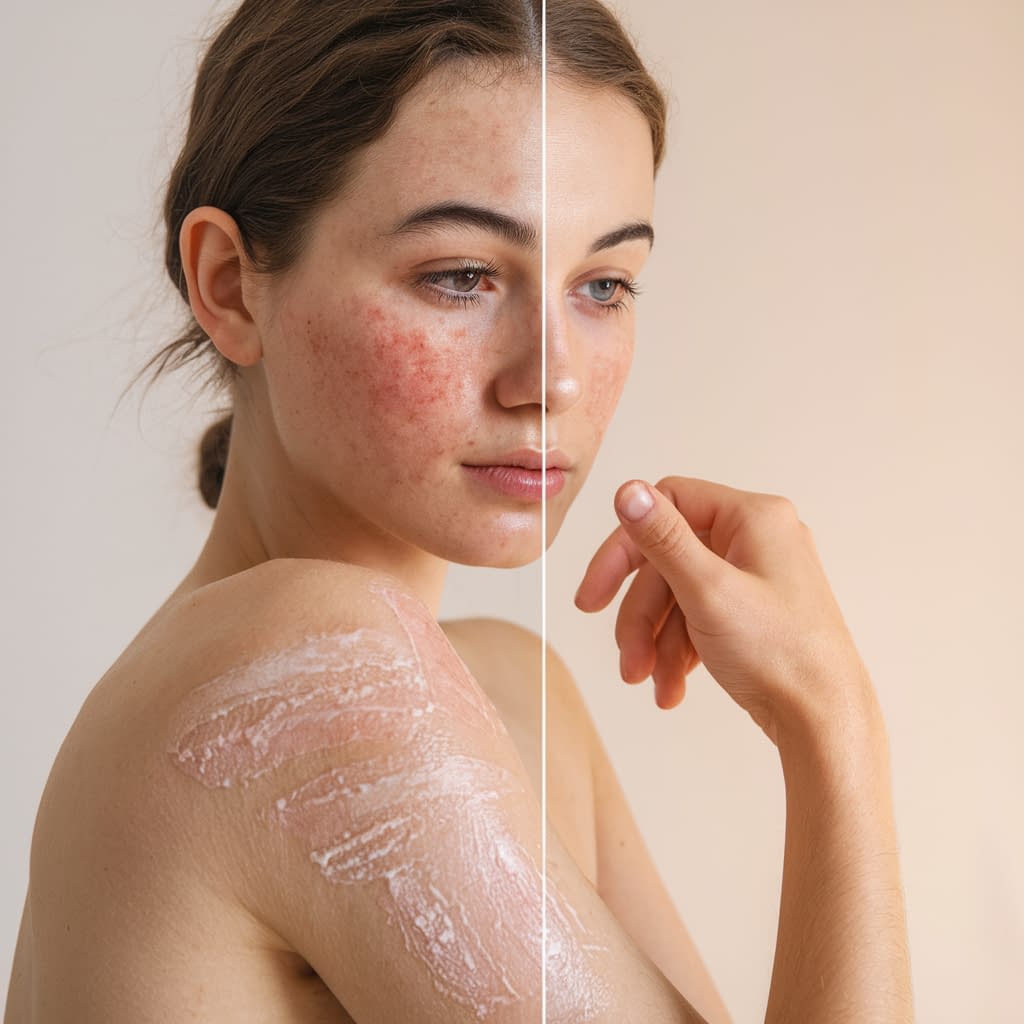
Scrubbing doesn’t fix winter flakiness — it makes it worse. Exfoliate carefully to remove scales and let moisturizers penetrate.
Safe exfoliation plan (step-by-step)
- Assess how flaky you are: If just a little flake, use gentle physical methods; if visible scaling or rough patches, use mild chemical exfoliation.
- Gentle physical option (once weekly): Soft konjac sponge or a very mild scrub with round granules — light pressure only. Don’t scrub red or cracked skin.
- Chemical exfoliation (best for consistent results): Low-concentration AHAs (5–10% lactic acid) or polyhydroxy acids (PHAs) that are gentler and hydrating. Use once weekly to start. Lactic acid helps both exfoliation and moisture.
- Spot treatment for thick scales: A urea-based cream (5–10%) softens and removes buildup; use as directed and do not combine with strong retinoids at once.
- Always follow with moisturizer and occlusive when needed.
- Avoid strong physical brushes, glycolic peels >10%, or aggressive microdermabrasion during winter unless supervised by a professional and you follow strict barrier repair afterwards.
Safety: stop exfoliation if you get redness, stinging, or increased peeling. Give the barrier time to repair, then resume less frequently.
Humidifiers: Your Skin’s Secret Winter Ally
If your house air is desert-dry, nothing else will fully make up for it. Humidifiers are low-effort and high-return.
How to use a humidifier effectively (step-by-step)
- Aim for 40–50% relative humidity in living spaces. That’s a comfortable middle ground that reduces dryness without encouraging mold. If you don’t have a hygrometer, get one cheap — it’s worth it.
- Place a humidifier in your bedroom and/or living room where you spend most time. For open floor plans, use more than one smaller machine or a larger capacity unit.
- Keep it clean: follow manufacturer instructions for cleaning and changing water — stagnant water breeds bacteria and mold. Clean every 2–3 days and deep clean weekly.
- Use distilled water if possible to reduce mineral build-up and white dust.
- Night use: run overnight in the bedroom; you’ll wake up less itchy and with fewer flaky patches.
Tip: If you notice condensation on windows or a musty smell, reduce humidity — you’re overdoing it and creating mold risk.
Dress Smart: Fabrics That Don’t Make Skin Crawl
Your clothes are either an ally or an enemy. Winter scratchiness often comes from improper fabrics and tight layers.
Clothing checklist (step-by-step)
- Avoid itchy synthetics directly on skin: polyester blends and wool can irritate sensitive skin. That said, some fine merino wool is fine for many people — test first.
- Use soft base layers: cotton, silk, modal, or bamboo blends are gentle and breathable. Wear these next-to-skin and put warmer synthetics on top for insulation.
- Looser layers prevent friction: tight clothing rubs and triggers irritation, especially on elbows, inner thighs, and underarms.
- Wash new clothes before wearing: residual dyes and finishing chemicals cause irritation; wash in hypoallergenic detergent if you have sensitive skin.
- Socks & gloves for nighttime: if hands or feet are dry, apply balm and wear cotton gloves/socks to bed to lock in moisture.
Bonus: choose fragrance-free laundry detergent and avoid fabric softeners with heavy perfumes which can aggravate reactive skin.
Don’t Forget Hands, Feet, and Elbows

People obsess about faces and forget the rest of the body. Those areas need special attention.
Targeted care routine (step-by-step)
- Hands:
- Use a gentle soap for hand washing and pat dry.
- Apply a hand cream immediately after drying; keep a small tube at work and by the sink.
- For cracked hands, use a thicker balm at night and wear cotton gloves.
- Feet:
- After showering, exfoliate callused areas once weekly with a pumice stone while wet.
- Apply a thick foot cream or urea 10–20% product at night and wear cotton socks.
- Elbows and knees:
- Use a cream with urea or lactic acid 5–10% once or twice weekly to loosen rough patches, followed by a nourishing emollient daily.
- Cuticle care: Apply cuticle oil daily to prevent hangnails and tiny tears that become painful in winter.
If you have cracked, bleeding areas or persistent fissures, treat gently and consider antiseptic ointment for openings; see a doctor if they don’t improve in a few days.
Boost Skin Health from the Inside with Food and Water
External care matters, but so does what you consume. Practical dietary moves help skin recovery and barrier strength.
Nutrition steps (step-by-step)
- Hydrate consistently: drink water throughout the day. Don’t expect water to fix a damaged barrier overnight, but chronic mild dehydration makes flaky skin worse.
- Eat anti-inflammatory fats: omega-3 rich foods (fatty fish, walnuts, chia) help skin barrier and reduce inflammation.
- Get enough protein: repair needs building blocks; collagen and structural proteins help the barrier.
- Vitamins & minerals that matter: zinc, vitamin A (not in excess), vitamin D, and vitamin C support repair. Aim to meet needs through a balanced diet; supplement only if recommended by a clinician.
- Limit alcohol and high-sodium meals before bed — they can dehydrate and worsen morning tightness.
- Consider a daily multivitamin if your diet is poor — talk to your doctor first.
Reality check: diet helps but is not magic. Do the topical work and make these food changes to speed recovery and prevent relapse.
When to See a Dermatologist Before It Gets Worse
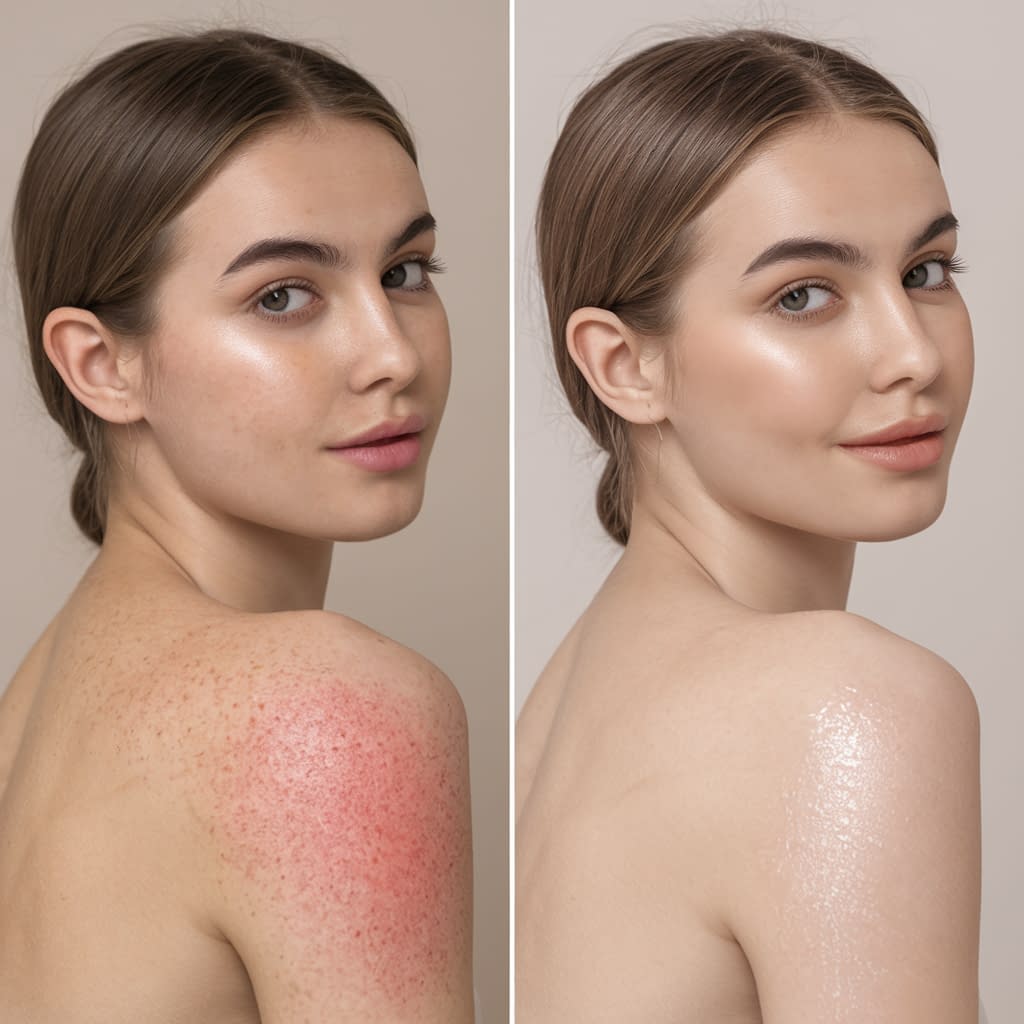
Most winter dryness is manageable at home. But some signs mean you should see a pro before the issue escalates.
Red flags and timing (step-by-step)
- If dry skin is painful, cracked, bleeding, or showing signs of infection (pus, increasing redness): see a doctor promptly.
- If you have severe itching that disrupts sleep or causes excoriations (you scratch until skin breaks): get medical advice for prescription options and to rule out eczema or allergic contact dermatitis.
- If over-the-counter measures for 2–4 weeks haven’t improved your skin: schedule a visit. Prescription topical steroids (short course) or non-steroidal options can repair barrier fast under supervision.
- If you suspect allergic contact dermatitis (new product or job exposure): dermatologist can perform patch testing to identify culprits.
- For persistent, widespread eczema or suspected psoriasis: a specialist can prescribe targeted treatments and help you build a long-term plan.
Prepare for your appointment by noting what you’ve used, how long symptoms have lasted, any suspected triggers, and whether anyone in your family has eczema or psoriasis.
Final Words
Winter skin problems are not a moral failing; they’re the predictable result of dry air, heat, and poor habits. The solution is boring and consistent: milder showers, moisturize while damp, pick the right product textures and ingredients (humectant + emollient + occlusive as needed), gently exfoliate when appropriate, run a humidifier, and treat hands/feet/elbows with the same respect you give your face. Dress smart, hydrate from the inside, and see a dermatologist if things get painful or don’t improve after a couple of weeks of consistent care.
Action checklist to start tonight:
- Lower shower temp and cut shower time to 5–10 minutes.
- Pat dry and apply a cream or balm while skin is still damp.
- Put a humidifier in the bedroom, set for ~45% humidity.
- Apply a thicker balm to hands and feet and consider cotton gloves/socks overnight.
Do these four things every night and most of winter will be less itchy. No drama. Just better skin.


